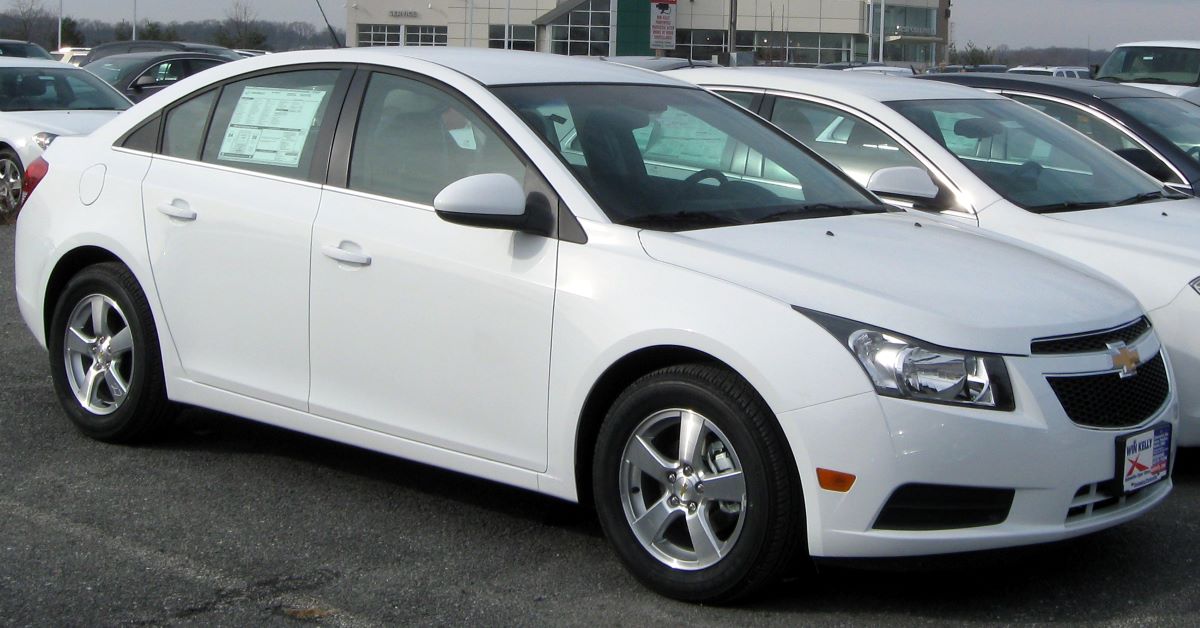The check engine light is one of the most dreaded alerts for any vehicle owner. Its sudden illumination often triggers anxiety about potential repairs, costly diagnostics, or unexpected breakdowns.
Yet, not all check engine lights are created equal. Some cars have a reputation for throwing random or intermittent check engine codes that can be baffling, costly, and frustrating to diagnose.
These unpredictable warning lights often stem from sensors, wiring issues, or quirks in the vehicle’s onboard diagnostic system, and they can lead to unnecessary visits to the mechanic or DIY troubleshooting headaches.
Conversely, there are vehicles known for being remarkably “code-clean” — models that rarely, if ever, trigger unwarranted check engine lights.
These cars tend to have robust engine management systems, well-engineered sensors, and high-quality components that maintain diagnostic stability even as the vehicle ages.
Owners of such vehicles enjoy peace of mind, fewer maintenance interruptions, and often lower ownership costs.
This article dives into two contrasting groups: five vehicles notorious for random check engine codes, and five that maintain a clean code history.
Understanding which cars fall into these categories helps buyers and owners set expectations, avoid surprises, and manage vehicle health more effectively.
Also Read: 5 Cars With Cheap OEM Parts And 5 That Need Rare Imports
5 Cars That Throw Random Check Engine Codes
Every car owner knows that the dreaded check engine light (CEL) can mean many things — from minor sensor glitches to serious engine problems.
However, some vehicles have earned a reputation for throwing random or intermittent check engine codes that seem to appear without any clear cause. These codes can come on suddenly, disappear on their own, or resist easy diagnosis.
This inconsistency not only causes frustration but can also lead to unnecessary parts replacements, repeated trips to the mechanic, and increased ownership costs.
The reasons behind these random codes vary. In many cases, they stem from faulty sensors that send erratic signals, wiring harness issues causing intermittent connectivity, or even quirks in the vehicle’s engine control unit (ECU) software.
For some vehicles, manufacturing tolerances or component choices make them prone to certain sensor failures. Others may have design issues that expose critical wiring or sensors to heat, moisture, or vibration, accelerating wear and triggering false alerts.
It’s important for owners of these vehicles to understand the nature of these codes. While some random codes indicate real issues needing attention, others may be harmless glitches that clear themselves or can be managed with simple resets or software updates.
Being aware of which vehicles are prone to these quirks helps buyers make informed decisions, and current owners avoid unnecessary panic or costly repairs.
In this section, we will explore five vehicles known for their tendency to throw random check engine codes. We’ll dig into the specific causes behind these codes, how owners typically deal with them, and why these cars ended up on this list.
By understanding these challenges, you’ll be better prepared to manage your vehicle’s diagnostics and keep maintenance costs in check.
1. Ford Focus (2012–2018)
The Ford Focus, especially the third-generation models produced between 2012 and 2018, is widely known for sporadic and sometimes baffling check engine codes.
This compact car earned a reputation for triggering random diagnostic trouble codes (DTCs) that perplex both owners and mechanics, often leading to repeated visits to service centers.
One of the main culprits behind the random CELs in the Focus is the problematic design and placement of certain sensors, particularly the crankshaft position sensor and camshaft position sensor.
These sensors sometimes fail intermittently or provide erratic signals to the engine control unit (ECU). The wiring harnesses for these sensors are also prone to wear and exposure to heat, which can cause loose connections or signal interference, triggering false codes.
In addition to sensor issues, the Ford Focus has been known for software glitches in its ECU. Early models of this generation occasionally experience communication errors within the onboard diagnostics system, leading to misleading or intermittent codes related to the fuel system, emissions, or ignition.
While some updates and recalls have addressed these software bugs, they are still a source of frustration for many owners.
Another factor contributing to random codes is the vehicle’s turbocharged EcoBoost engines (available in some trims). These engines have complex engine management systems with numerous sensors monitoring boost pressure, air-fuel ratios, and emissions controls.

Any sensor fault, even transient, can illuminate the check engine light with codes that may not immediately reflect a critical mechanical problem.
Owners often report the CEL coming on without any noticeable change in vehicle performance or drivability, only for the light to reset after a few drive cycles or an ECU reset. This intermittent nature complicates diagnostics and can lead to unnecessary replacement of components.
Despite these issues, the Ford Focus remains a popular and affordable vehicle, but prospective owners should be prepared for the possibility of random check engine codes and the patience needed to manage them.
2. Chevrolet Cruze (2011–2015)
The Chevrolet Cruze, particularly models from the 2011 to 2015 production years, is often cited for its tendency to trigger random check engine codes, much to the frustration of owners.
This compact sedan, while praised for its fuel efficiency and styling, has a known issue with its onboard diagnostics occasionally flagging codes that don’t always point to immediate or obvious mechanical faults.
One common source of random codes in the Cruze is the mass airflow sensor (MAF). The MAF sensor plays a critical role in measuring the volume and density of air entering the engine, which helps the ECU calculate fuel delivery.
In many Cruzes, the MAF sensor can become dirty, malfunction intermittently, or produce inconsistent readings due to wiring or connector issues. This often causes codes related to air intake or fuel trim anomalies, even if the sensor isn’t fully failing.
In addition to the MAF sensor, the oxygen sensors and evaporative emissions system components are also known trouble spots.
Faulty or marginal oxygen sensors may send fluctuating signals, triggering intermittent codes for fuel mixture or catalytic converter efficiency.
The EVAP system, which prevents fuel vapor leaks, can similarly produce random codes due to loose gas caps, cracked hoses, or faulty purge valves.
Software glitches in the ECU also contribute to the Cruze’s random check engine codes. Some models require ECU updates to resolve communication errors or sensor calibration issues. Failure to apply these updates can leave owners chasing elusive codes that come and go without clear cause.

Owners frequently report scenarios where the check engine light turns on after driving in certain conditions—such as cold starts or highway driving—and then disappears after a few cycles or a reset. This intermittent behavior complicates repair efforts and can lead to unnecessary part replacements.
While the Cruze’s random code tendencies can be annoying, regular maintenance, proper sensor cleaning, and timely software updates can help reduce false alerts and improve diagnostic accuracy.
Prospective buyers should keep these issues in mind and expect occasional CEL illumination that may not signal a major problem.
3. Volkswagen Jetta (2011–2018, MK6 and MK7 Generations)
The Volkswagen Jetta, especially models from the 2011 to 2018 MK6 and early MK7 generations, is notorious for throwing random check engine codes that often confuse owners and mechanics alike.
Known for its German engineering and refined driving experience, the Jetta also comes with a history of diagnostic quirks, primarily related to its emissions and engine management systems.
One frequent source of random codes in the Jetta is the malfunctioning of the camshaft position sensor. This sensor monitors the position of the camshaft and helps the ECU control fuel injection and ignition timing.
In many Jetta models, the camshaft sensor can send intermittent signals due to wiring harness wear or sensor degradation, causing erratic check engine light triggers. The sensor’s location near high-heat engine components can accelerate its failure.
Another common problem area is the evaporative emissions (EVAP) system. The Jetta’s EVAP system is complex and often prone to leaks or faulty purge valves.
Small cracks in hoses, a loose gas cap, or failing valves can cause random and recurring codes related to fuel vapor containment. These codes may appear and vanish without clear patterns, leading to frustrating diagnostic attempts.

Additionally, Volkswagen’s direct injection engines in these years sometimes encounter issues with fuel system sensors and software calibration glitches. This can lead to false alerts for fuel trims or oxygen sensor faults that don’t always correlate with actual mechanical problems.
Many Jetta owners report that their check engine light comes on during cold weather or after refueling and then resets itself after driving a few miles or performing a diagnostic reset. While some issues require genuine repair, many are linked to sensor noise or temporary system glitches.
If you own or consider purchasing a Jetta from this era, be prepared for these intermittent codes. Understanding the typical failure points and addressing sensor or EVAP system issues proactively can reduce the frequency of random CEL warnings and keep the vehicle running smoothly.
4. Toyota Camry (2012–2017, XV50 Generation)
The Toyota Camry is known for its legendary reliability, but the 2012–2017 XV50 generation has been reported by some owners to throw random check engine codes that can cause confusion and concern.
While generally dependable, certain sensor and system quirks make this Camry prone to intermittent warning lights that don’t always indicate serious issues.
One common source of random check engine codes in this generation is the oxygen sensor system. The Camry’s multiple oxygen sensors monitor exhaust emissions and help the engine run efficiently.
However, some sensors may produce erratic readings due to wiring degradation or sensor aging. These irregular signals can trigger codes related to fuel mixture or catalytic converter efficiency, even when the catalytic converter is functioning properly.
Another factor contributing to random codes is the evaporative emissions (EVAP) system. Some XV50 Camrys experience issues with the purge valve or vent valve, which can cause occasional leaks detected by the vehicle’s diagnostics.
Additionally, a loose or damaged gas cap is a frequent culprit for random EVAP-related check engine codes.
The Camry’s onboard diagnostic system is sensitive to these sensor fluctuations and will often illuminate the check engine light when it detects out-of-range values, sometimes only temporarily. In many cases, the warning light resets itself after a few drive cycles if the sensor readings normalize.

Though these random codes can be frustrating, they rarely indicate major mechanical faults. Regular inspection and timely replacement of aging sensors, as well as ensuring the gas cap is properly tightened, can reduce the occurrence of false alerts.
For Camry owners, understanding these tendencies helps prevent unnecessary repairs and costly diagnostics. The XV50 remains a reliable choice but with an awareness that minor sensor glitches may trigger the check engine light sporadically.
5. Nissan Altima (2013–2018, L32 Generation)
The Nissan Altima, particularly the L32 generation from 2013 to 2018, is another vehicle known to randomly throw check engine codes that leave owners scratching their heads.
While generally a solid midsize sedan, the Altima’s engine management system and sensor network have a history of generating intermittent warning lights that don’t always indicate severe issues.
One of the most common triggers of random codes in the Altima is the mass airflow sensor (MAF). The MAF sensor in these models can become dirty or suffer from wiring faults, causing inconsistent air intake readings. This leads to sporadic codes related to fuel trim or air-fuel mixture problems, even when the engine performs normally.
The Altima’s EVAP system is also prone to occasional faults. Problems with purge valves or small leaks in hoses can cause random codes related to fuel vapor containment. These codes often appear unexpectedly and sometimes clear themselves after a few drive cycles.
Additionally, the Altima’s oxygen sensors may occasionally send erratic signals, triggering codes for inefficient combustion or catalytic converter performance. Wiring issues or sensor wear can cause these intermittent signals.

Owners often report the check engine light illuminating without any noticeable change in vehicle performance, only for it to disappear after resetting the ECU or driving for a while.
This intermittent behavior complicates diagnostics and can lead to unnecessary parts replacement if the root cause isn’t properly identified.
Despite these quirks, the Nissan Altima remains a popular and dependable choice. Understanding its tendency to throw random check engine codes helps owners avoid panic and focus on targeted maintenance like sensor cleaning, wiring inspection, and ensuring EVAP components are in good condition.
5 Cars That Are Code-Clean
While some vehicles have a reputation for random and confusing check engine codes, others stand out for their exceptional diagnostic reliability.
These code-clean cars rarely throw check engine lights without a genuine mechanical reason, offering owners peace of mind and fewer unexpected trips to the mechanic.
This reliability is often the result of robust engine management systems, high-quality sensors, and well-designed wiring harnesses that minimize false alerts and diagnostic errors.
Code-clean vehicles typically benefit from meticulous engineering and quality control, which ensure that sensors perform accurately over long periods, wiring connections remain secure despite heat and vibration, and software systems efficiently interpret data without generating false alarms.
Moreover, manufacturers of these models tend to provide timely updates and refinements to their onboard diagnostics systems, helping to maintain diagnostic accuracy throughout the vehicle’s lifecycle.
For owners, code-clean cars translate into fewer interruptions, reduced maintenance costs, and more confidence in the vehicle’s health. When the check engine light does come on, it is usually a clear indicator that something truly requires attention, allowing for quicker and more targeted repairs.
This section highlights five vehicles that consistently demonstrate code-clean performance. We will explore the design features, sensor quality, and engineering choices that contribute to their diagnostic stability.
By understanding why these cars rarely produce false check engine codes, prospective buyers and current owners can better appreciate the value of reliable diagnostics in everyday vehicle ownership.
1. Honda Accord (2018–2022, 10th Generation)
The Honda Accord, particularly the 10th generation models produced from 2018 to 2022, is widely recognized for its exceptional reliability, including a remarkably code-clean engine management system.
Owners and mechanics alike praise this generation of Accord for rarely triggering random or false check engine codes, making it a standout choice for drivers seeking hassle-free ownership.
One key reason behind the Accord’s diagnostic stability is Honda’s focus on high-quality sensors and robust wiring harnesses.
The vehicle’s mass airflow sensors, oxygen sensors, and other critical engine monitoring components are manufactured to exacting standards and designed to withstand heat and vibration over long periods without degradation. This durable hardware minimizes the risk of sensor failures that can cause false diagnostic trouble codes.
Additionally, Honda’s ECU software in the Accord is finely tuned to interpret sensor data accurately. The sophisticated onboard diagnostics system avoids overreacting to transient anomalies, reducing unnecessary check engine light illuminations.
When a check engine light does appear, it almost always points to a genuine mechanical issue, allowing owners to address problems promptly and efficiently.

The Accord’s reliable fuel system, emission controls, and engine components further contribute to its code-clean reputation.
This generation employs advanced engine designs, such as direct injection and turbocharging in some trims, but maintains diagnostic reliability through rigorous quality control and continuous software improvements.
For owners, this translates to fewer surprise warning lights and less time and money spent on troubleshooting ambiguous error codes. The Accord’s code-clean status makes it an excellent choice for buyers prioritizing dependability and low maintenance costs.
2. Toyota Corolla (2017–2023, 12th Generation)
The Toyota Corolla, especially the 12th generation models from 2017 through 2023, is renowned for its steadfast reliability and a notably code-clean engine management system.
This compact sedan has earned a reputation for rarely triggering random or false check engine lights, making it a dependable choice for drivers who prioritize worry-free ownership.
One of the primary reasons for the Corolla’s clean diagnostic record is Toyota’s commitment to quality components and precise engineering.
The sensors critical to engine management—such as oxygen sensors, mass airflow sensors, and crankshaft position sensors—are built to exacting standards, providing consistent and accurate data to the ECU.
Toyota’s rigorous quality control in wiring harness durability also helps prevent common issues like poor connections or sensor interference, which often cause false codes in other vehicles.

Moreover, the Corolla benefits from Toyota’s refined onboard diagnostics software. The ECU is programmed to filter out transient sensor fluctuations and only illuminate the check engine light when a genuine fault occurs. This prevents unnecessary warnings and helps drivers trust the system’s alerts when they appear.
The Corolla’s engine and emissions systems are also designed for longevity and stability. Whether powered by a traditional gasoline engine or a hybrid powertrain, the vehicle’s components are engineered to operate smoothly and predictably, which reduces the likelihood of sensor errors or system glitches that can lead to random codes.
For owners, this translates to fewer unexpected warning lights and lower diagnostic hassles. When the check engine light does come on, it is usually a clear indication that the vehicle requires attention, allowing for timely and targeted repairs.
Overall, the Toyota Corolla stands out as a code-clean vehicle that combines affordability, efficiency, and diagnostic reliability, making it an excellent choice for a broad range of drivers.
3. Mazda CX-5 (2017–2021, Second Generation)
The Mazda CX-5, especially models from the 2017 to 2021 second-generation range, has earned a reputation not only for its driving dynamics and design but also for its remarkably code-clean engine management system.
Owners often praise this compact SUV for rarely illuminating the check engine light without a clear and genuine cause, which is a testament to Mazda’s commitment to reliability and precision engineering.
A significant factor behind the CX-5’s code-clean status is Mazda’s use of high-quality sensors and a well-designed engine control unit (ECU).
The critical sensors—such as the mass airflow sensor, oxygen sensors, and throttle position sensors—are built to withstand harsh conditions and provide accurate, consistent data to the ECU. This durability reduces the chances of sensor failures or erratic readings that often cause random diagnostic trouble codes.
Furthermore, Mazda’s Skyactiv engines incorporate advanced combustion technology while maintaining strong reliability. This engine design minimizes combustion irregularities that can trigger unnecessary check engine lights in other vehicles.
Mazda’s ECU software is also finely tuned to process sensor data accurately and avoid false alarms due to transient sensor glitches.
The wiring harnesses and electrical connections in the CX-5 are another strong point, with solid insulation and secure connectors that resist wear and vibration. These factors contribute to stable communication between sensors and the ECU, preventing intermittent faults.

Owners of the CX-5 report that when the check engine light does come on, it is almost always due to a legitimate issue, making diagnostics and repairs more straightforward and cost-effective. This reliability enhances ownership satisfaction and reduces downtime.
Overall, the Mazda CX-5 blends performance, style, and dependable diagnostics, making it a top pick for buyers looking for a compact SUV with a clean diagnostic record.
4. Subaru Outback (2018–2022, Fifth Generation)
The Subaru Outback, particularly the fifth generation produced from 2018 to 2022, is known for its rugged capability and reliable performance, but it also stands out for its code-clean engine management system.
This midsize crossover SUV consistently demonstrates a low incidence of random or false check engine codes, giving owners greater confidence in their vehicle’s health.
Subaru’s commitment to durability is evident in the quality of sensors used in the Outback. Components such as oxygen sensors, mass airflow sensors, and crankshaft position sensors are engineered for longevity and accurate performance, reducing the likelihood of erratic readings that can cause spurious check engine light activations.
The Outback’s engine management software is designed to carefully evaluate sensor input, filtering out transient anomalies that might otherwise trigger unnecessary warning lights. This ensures that the check engine light is reserved for genuine issues, allowing owners to focus on true maintenance needs.

Additionally, Subaru’s Boxer engine configuration offers balanced performance and reduced vibration, which contributes to the stable operation of engine sensors and electrical components.
The durable wiring harnesses and connectors also help maintain reliable communication between sensors and the ECU, minimizing false diagnostics.
Owners appreciate that when the check engine light illuminates on their Outback, it typically signals a legitimate problem, enabling timely and accurate troubleshooting. This reduces diagnostic guesswork and prevents unnecessary parts replacement.
In conclusion, the Subaru Outback’s combination of robust engine design, high-quality sensors, and precise diagnostic software results in a vehicle that maintains a clean code history. This makes it an excellent choice for those seeking a dependable SUV with minimal diagnostic surprises.
5. Lexus RX (2016–2022, Fourth Generation)
The Lexus RX, particularly the fourth-generation models produced between 2016 and 2022, is well-regarded for its luxurious ride quality and long-term reliability, including an impressively code-clean engine management system.
This luxury midsize SUV consistently avoids random or false check engine codes, contributing to its reputation as a dependable and hassle-free vehicle.
One of the key reasons behind the RX’s diagnostic reliability is Lexus’ use of high-grade sensors and meticulous assembly processes.
Oxygen sensors, mass airflow sensors, and other critical engine components are designed to perform accurately under a wide range of conditions, reducing sensor degradation and false error signals over time.
The electrical systems also benefit from superior wiring harnesses and connectors that resist corrosion and vibration-related issues.

Additionally, the Lexus RX employs advanced onboard diagnostic software that carefully interprets sensor data to minimize unnecessary alerts.
The system filters out minor sensor fluctuations and transient anomalies, ensuring that the check engine light is reserved for meaningful mechanical issues that require attention.
The RX’s robust V6 and hybrid powertrains are engineered for smooth operation and consistent combustion, which further helps prevent erratic sensor readings and diagnostic errors. Owners often report that the check engine light only illuminates when genuine maintenance or repairs are necessary.
For drivers who prioritize luxury alongside reliability, the Lexus RX offers the advantage of peace of mind with its clean diagnostic history. This reduces diagnostic headaches and helps keep maintenance costs manageable over the vehicle’s lifespan.
Overall, the Lexus RX exemplifies how careful sensor selection, durable electrical components, and refined diagnostic software can create a code-clean vehicle that enhances the ownership experience.
Navigating the landscape of vehicle diagnostics can be challenging for car owners, especially when faced with the uncertainty of random or false check engine codes.
As we’ve explored, some vehicles are prone to throwing intermittent and confusing diagnostic trouble codes that don’t always correspond to real mechanical problems.
This tendency can lead to unnecessary stress, frequent trips to the mechanic, and potentially costly, unnecessary repairs.
Cars like the Ford Focus, Nissan Altima, and Jeep Grand Cherokee are examples where sensor issues, wiring problems, or software quirks cause the check engine light to illuminate seemingly at random, complicating maintenance efforts.
Conversely, there are vehicles designed with robustness and diagnostic accuracy in mind, which consistently maintain a clean check engine light history.
Models like the Honda Accord, Toyota Corolla, and Lexus RX stand out due to their high-quality sensors, durable wiring, and finely tuned onboard diagnostics software.
These vehicles provide owners with the confidence that when the check engine light does appear, it signals a real issue that requires attention. This reliability reduces downtime, lowers repair costs, and ultimately contributes to a more satisfying ownership experience.
Understanding the differences between these two groups is essential for prospective buyers and current owners alike.
Those seeking peace of mind and minimal diagnostic headaches may lean towards code-clean vehicles known for their stable sensor performance and reliable ECU software.
Meanwhile, owners of vehicles prone to random codes can benefit from proactive maintenance practices, such as regular sensor inspections, wiring checks, and using professional diagnostic tools to pinpoint root causes rather than relying solely on generic error codes.
In summary, the presence or absence of random check engine codes reflects not only a vehicle’s mechanical condition but also its design philosophy and engineering quality.
By selecting vehicles with proven code-clean track records, drivers can enjoy greater reliability and fewer surprises on the road, enhancing both safety and satisfaction throughout the vehicle’s lifespan.
Also Read: 5 Cars Where Battery Replacements Are Under $150 And 5 Over $400

